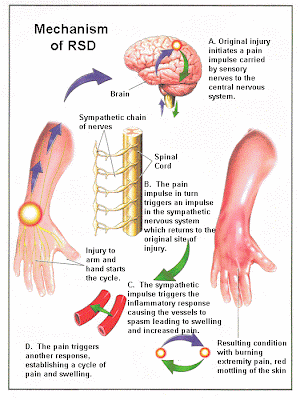
The felines strike again, and that always leaves me feeling better, usually for having laughed and laughed and laughed. They're a bunch of nutters.
I am in a Period of Inertia. Not unrelated, but not exactly coincidental, either, is the fact that I am spiking fevers over the 101 mark, and doing that daily. It is, to put it mildly, depressing. As of the first of October, I'll cease to have health insurance coverage. There are several important things that need doing before this happens, and I've not done any of them.
As usual, when I am too self-involved, the antics of our pets manage to both help pass the miserable time spent shivering and lost in febrile headaches, as well as to simply keep me amused and somewhat distracted.
Of what significance, then, this gnawing in the pit of my stomach, this trembling of my hands?
[One very good thing of late? The pain I am in has nearly normalized -- I am back to what is a baseline state of being, and am oh-so-grateful.]
We're gifted with four cats: Sam-I-Am, Marmy (a.k.a. Fluffy Butt), Dobby, and Uncle Kitty Big Balls (a.k.a. Little Boy).
Sammy is the Elder Statesman -- which would be news to him, of course. He is a sensitive soul, which is to say, neurotic -- and needy. Marmy and Uncle Kitty Big Balls are siblings. They were both Street Urchins who began dropping by The Manor for the odd meal and a round of petting. Fred, playing on Sam's need for company and on Marmy's very pregnant condition, lobbied for Marmy's adoption, and won. She was essentially a feral cat that put up with us. Her five kittens were as foreign to her as Moon Rocks. We feared for their little lives those first few days -- they would latch on to her and begin nursing, which would trigger a fit of pique in Marmy, and the next thing you knew, she would take off... leaving blind and bald kittens scattered throughout Our Wing of Marlinspike Hall. I nearly flattened a few with my wheelchair. Anyway, we managed to socialize her but it took a tremendous amount of time -- and the trust we earned risks destruction everytime her routine world is rocked. She has a vet visit scheduled in a few weeks and we dread the impact of that on her -- the vet does not figure among her Facebook Friends.
Dobby, Our Little Idiot, was the runt of Marmy's litter. After the birth of the first four, Marmy lost interest in her last delivery -- Fred served as obstetrician. We were sure that Dobby would either not survive at all, or would be terribly damaged. He barely nursed -- indeed, that whole operation seemed to go right over his little bald and blind head. He showed a strange interest in climbing -- no matter where he was, he seemed determined to hike to the highest available altitude. He was roughly two days behind the others in all the developmental landmarks and could often be found struggling to emerge from beneath a fuzzy pile made up of all his siblings. (That might have fed the desire to constantly climb...)
Once it was apparent that he was going to live, he quickly became our favorite due to his courageous Little Spirit. He would be the first to attack My Red Angora Leg Warmers (I'll give you a moment to visualize), the first to leap from the strange heights of The Gigantic Bed to the antique Persian carpets below, and the first to respond to any cries of distress. Because he has remained such an intelligent, small, and social creature, very dedicated to The Common Good, we named him after the House Elf in the Harry Potter series.
And so, there were three. This suited me just fine, although Marmy could be irksome, and keeping her lucious long hairs off of The Captain's finery was a never-ending task.
Marmy's brother remained a stray and we saw him in fits and starts. His health began to go downhill and Fred suffered pangs of guilt for not having taken him in at the same time we adopted his sister, Miss Fluffy Butt. He suffered bouts of mange, then obvious injuries from fighting. Just before going into the hospital in April, I saw him hanging out by The Moat, and realized that he was limping badly. That hospitalization was difficult, and included time in ICU, on a ventilator.
As I lay there, struggling to breathe, Fred came to my side, looking grave and troubled. I couldn't talk to him, but recall thinking I would do most anything to take that worried look from his face. He said, "There is something important I need to talk to you about..." and thoughts of oh-my-God-he-wants-to-turn-off-the-machines-and-let-me-die went through my head, closely followed by fears of Marlinspike Hall having burnt to the ground.
"Uncle Kitty Big Balls came by this afternoon and was looking horrible. I can't stand it anymore; I want to adopt him. If we don't, he is going to die."
Yes, it took me a minute to switch gears. And then I was so profoundly glad that he wasn't planning to euthanize me and that our current home remained standing, that I mouthed and nodded "yes, yes, yes..."
$3,000 later, Uncle Kitty Big Balls was on the road to recovery. He, like me, had a bad case of osteomyelitis and required amputation of a toe, and removal of some infected bone. The famed Big Balls were gone, too, as were the three or four terrible abscesses from his various street fights. (He has an awesome record, his preferred style being a rustic, yet oddly elegant vale tudo.)
His fur was almost completely shaved off, and he was emaciated.
Unbelievably, though, he suffered from none of the terrible illnesses I'd expected -- no feline leukemia, no feline AIDS, no kidney diseases. And week by week, then day by day, he healed.
The cat follows Fred around as if he were some sort of Feline Deity, which I guess he is, from UKBB's point of view!
Whew. So that's the gang. Sometimes I feel for Sammy -- he's up against a family dynasty... But then I watch him enjoy the comaraderie and fun, and so long as we provide him with one-on-one attention, he really benefits from the company. I mean, just look at this picture -- evidence of the Benefits of Dobby -- Nuggler Par Excellence:

Oh, My God. I put a caption on a photo of my cats. I am Cat Woman. Oh. My. God.
Anyway.
I'm pretty much blind without my glasses. Yes, that's right -- go, ahead, picture it -- glasses, purple legs, and a Pressure Sore,
Alma de Cuba of the Ischium. Dress that image up with My Red Angora Leg Warmers. Lucky Fred, eh?
Dobby gets bored easily. Because he's such a sweet-natured creature (We figure because he has only ever known us, and we are such good influences -- imagine if we had human progeny, what delights they might be!) -- because he's such a sweet-natured creature, Dobby is clueless sometimes about right and wrong.
He has boundary issues.
Of course, he's also a cat.
He delights in stealing things. It's comical -- he's so tiny and yet will grip whatever booty he's absconded with in his mouth, and fly like the wind through Our Wing of The Manor, eyes bugging out of his little pin head.
We excuse every lapse in etiquette on The Dobster's part by reminding ourselves that he's got a really tiny little head.
He makes off with pens, tweezers, combs (a real favorite), MP3 players, thermometers, and small paring knives (*once*). His larger conquests include my grabber, which he perceived as a mortal enemy when a kitten, Fred's Crox, and just yesterday, the hefty 2010 IKEA catalogue.
He occasionally steals my eyeglasses.
If that were all, it'd be fine. The thing is, once the theft goes down, Dobby loses interest and his fastidious and freaky mother takes over.
Did I mention that without the aid of glasses, I am essentially blind?
So, this morning, when Marmy got the glasses in the hand-off, I glared and yelled in her general direction. Fairly leaping from bed to wheelchair, I sped off in that same general direction, colliding with two walls and one door frame on the way.
Upon arrival at said general location, I realized that I was chasing... a lambswool duster that La Bonne et Belle Bianca Castafiore had left propped in the corner of The Hallway To Our Rustic Kitchen.
Behind me, I heard the taletell sound of an amused *ack*-*ack*-*ack*. Slowly I turned...
and saw the rapidly receding end of Ms. Fluffy Butt, my glasses astride her fluffy fat head.
And so begins another day, here at Marlinspike Hall, deep, deep in the Tête de Hergé. If Marmy is true to form, she'll eventually return my spectacles by dropping them in the communal water dish, none the worse for wear.
Though temporarily blind, I am blessed. All that remains is to realize it.


 Nothing new about Lindsey J. Baum.
Nothing new about Lindsey J. Baum.
 Sacré bordel*, what a day!
Sacré bordel*, what a day!


 Judge Rejects Settlement Over Merrill Bonuses
Judge Rejects Settlement Over Merrill Bonuses

 Let your Freak Flag fly!
Let your Freak Flag fly!
 It's more dried stinky stuff (That's potpourri to you.). This is what happens when I wake up agitated.
It's more dried stinky stuff (That's potpourri to you.). This is what happens when I wake up agitated.